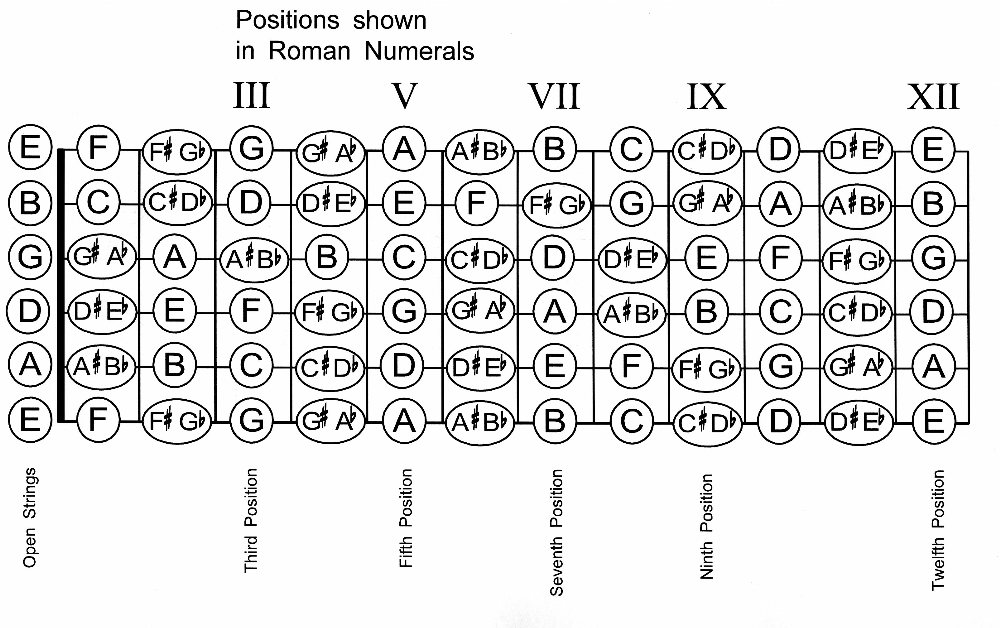Sight Reading on Guitar Part 1
By Rob Thorpe
Have you ever been faced with sheet music littered with dense notated chords and been asked to play from it, only to freeze up and have to start deciphering it note by note? Reading is a prickly subject for guitarists. The task is made more difficult by the amount of fingering options that the layout of the fretboard affords us (compared to a piano for example, which only contains one of each pitch.) but with methodical practice it is very achievable to reach a good degree of literacy.
This is a skill many guitarists do not bother with, and I’d like to persuade you of the benefits of learning to read as a guitarist. Firstly, it gives you the ability to play music without having to first go through it all to learn it by ear, secondly standard notation is shared by all western instruments so you will be able to play music written for other instruments, instead of needing tabs. Finally, and perhaps most rewarding, it makes you incredibly employable as a working guitarist. Be it in a music theatre pit orchestra, cruise ship bands, or session playing, being able to quickly interpret a chart is the central skill.
We’re going to briefly cover the basics of notation, how to apply it to the fretboard in a manageable way, methods of practicing and then move onto tackling intervals and chords. It’s a complete guide to sight-reading on guitar.
Before you can begin to read music, you must know notes on the fretboard. This is also an essential skill for your general playing so if this is something you need to address then can I recommend two approaches: Drawing diagrams of the fretboard and filling in the notes. This can done away from the guitar, on buses, trains, in school/the office… Also, say the note names as you play your licks or scales (you will probably have to slow them down greatly at first) Both of these methods, done rigorously should have you fluent pretty quickly. Here is a fretboard diagram for reference:

Now, let’s look at some notation. For this week we will be only concerned with pitch, and leave rhythm for next week’s issue. In the second diagram, I’ve labelled a stave with the names of the notes. It is worth quickly recalling the primary school music phrases ‘Every Good Boy Deserves Football’, and ‘FACE’ to help make this information stick.
Now we have the open strings of the guitar, E A D G B E positioned on the stave. Notice how the bottom E and A strings are below the stave. These extensions are called ledger lines, and carry on the sequence of notes either side of the stave. Count down in steps from the stave to get to E.
Throughout this series of sight reading I suggest playing through each example and using the audio to check that you got it correct, rather than listening beforehand.
Sight Reading on Guitar Example 1
Now to play something! All of these notes are found in the first three frets of the guitar, combined with open strings. The following example consists of straight ½ notes, or minims, and starts on the open high E string. Take your time to identify each note as you go, it may feel like a tedious thought process, but as with any new task, the brain exhibits a remarkable ability to soon internalize the thought process with a little bit of regular practice.

Example 2
Similar idea to ex. 1 only this time starting on the D string, and there are more notes. You may like to print the examples out so you can mark the open strings on the stave before playing through it.

Example 3
Finally we start the line on the bottom E string. Try not to over think the ledger lines, and follow the line’s direction from the starting point on E.

Recommended Reading: Obviously, listening doesn’t help you here! Joseph Alexander has written a brilliant book of reading exercises for Fundamental Changes. Also of benefit are simple singing books such as those published by the OUP.
| Read Next Lesson |
“The artists you work with, and the quality of your work speaks for itself.”
Tommy Emmanuel
© Copyright Fundamental Changes Ltd 2025
No.6 The Pound, Ampney Crucis, England, GL7 5SA

